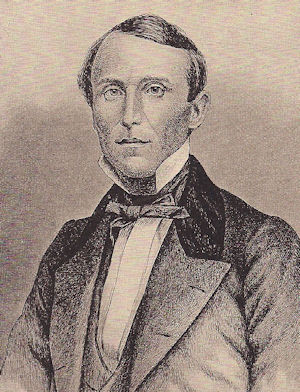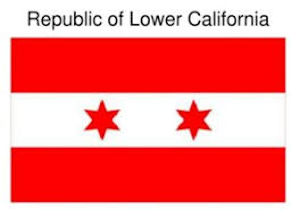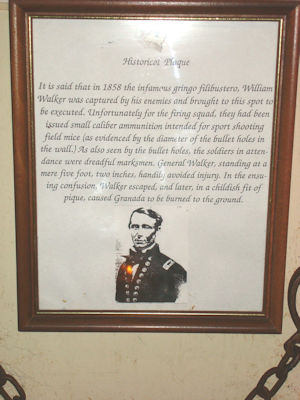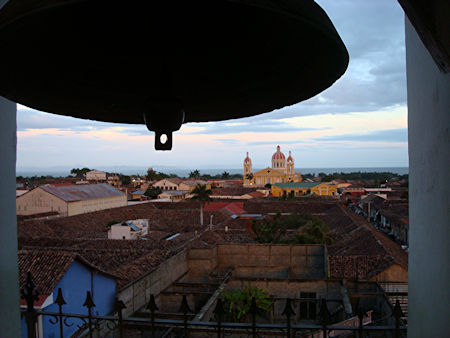 |  |
By Greg Niemann

The most infamous American to set foot in Baja California was likely William Walker, a diminutive southerner who went there to establish his own country which he called the Republic of Lower California.
An unlikely warrior, Walker was born into a distinguished Tennessee family on May 8, 1824. One of his maternal uncles was a U.S. Senator and founder of the still viable The Philadelphia Enquirer. A child genius, William graduated from the University of Nashville at the top of his class at age 14. By the time he was 25, he had degrees in both medicine and law and was legally allowed to practice as both a doctor and lawyer. He also worked as a publisher and journalist.
At heart, however, Walker was a restless adventurer. While still a teen, he went to Europe and studied at both the University of Edinburgh and the University of Heidelberg before receiving his medical degree at the University of Pennsylvania – all before the age of 19! He also spent time in New Orleans and San Francisco.
Although standing only 5’2”, Walker still had a commanding presence and the charisma of later-day televangelists. He was also fearless. While working as editor of the San Francisco Herald in January, 1851, Walker was shot in the thigh in a highly-publicized duel with a notorious gunfighter.
It seems that medicine, law, journalism, and travel were not enough for the visionary Walker. He dreamed big and set out to conquer much of Latin America, starting in Mexico!
Taking over Baja California
In 1853, he first sought a grant from Mexico to create a colony in Sonora which would serve as a fortified frontier, providing protection from Indian raids. Mexico refused.
Undaunted, he began recruiting American supporters of slavery and the Manifest Destiny doctrine. His plans then expanded from that proposed buffer colony to establishing an entirely independent Republic of Sonora.
But first he decided to conquer Lower California (Baja California). Then with the peninsula secure he would advance on Sonora. In October, 1853, Walker sailed from San Francisco with 45 men to take over Lower California.

He and his army, mostly young southerners like himself, stopped in La Paz where they captured the governor, hoisted their own flag, and proclaimed their land the Republic of Lower California. Mexican forces gathered against him, and after one skirmish Walker fled to Ensenada where he proclaimed himself “president of his new republic” and applied the laws of the State of Louisiana, which included legalized slavery.
Word of his daring attack had spread in the United States and a large number of Americans thought Walker’s project was a great idea. Volunteers lined up to join the expedition.
Even though his army was bolstered with 230 more volunteers, he was attacked by Mexican forces. There were a few fatalities, but Walker and his men were able to dislodge the attempts.
After a U.S. government ship came to Ensenada to persuade Walker to leave, he marched his army south and relocated his “capital” in the old mission town of San Vicente.
In March 1854, he lost most of his troops to suffering, thirst and abandonment as he tried to cross the desert to realize his original dream, that of capturing the mainland state of Sonora. He returned to San Vicente to learn most of the small force he left there had deserted, and those who did not were killed by the Mexican army. In May, he and the remainder of his troops fought their way back to the United States.
He was captured crossing the border and was tried by an American jury for conducting an illegal war and violating neutrality laws. Nevertheless, in that era his filibustering project was popular, especially in the southern and western United States. and the jury took only eight minutes to acquit him.
Released, but not reformed, he focused his eyes on even bigger targets. William Walker formed a new army and headed for Central America.

President of Nicaragua
Within a year Walker was back in action in Nicaragua which had one tremendous advantage before the Panama Canal was built. Most shipping went through Nicaragua by sailing up the San Juan River from the Caribbean, across Lake Nicaragua and then a short overland trip through Rivas to the Pacific.
At the time, Nicaragua was involved in a civil war, one party based in the city of Granada and the other in Leon. Walker was approached by the Leon faction—which was losing—and he rushed to Nicaragua with some 60 well-armed men. Upon landing, he was reinforced with another 100 Americans and almost 200 Nicaraguans. His army marched on Granada and captured it in October 1855. Because he was already considered supreme general of the army, he had no trouble declaring himself president. In May 1856, U.S. President Franklin Pierce even officially recognized Walker’s Nicaraguan government.
Walker had made many enemies in his conquest, including shipping magnate Cornelius Vanderbilt, who controlled the route across the isthmus. As president, Walker revoked Vanderbilt's rights to ship through Nicaragua. Vanderbilt was understandably enraged and sent soldiers to oust him. Vanderbilt's men were joined by those of other Central American nations who feared that Walker would take over their countries too.
Walker had overturned Nicaragua's anti-slavery laws and made English the official language, which angered many Nicaraguans. In early 1857 the Costa Ricans invaded, supported by Guatemala, Honduras, and El Salvador, as well as Vanderbilt’s money and men. Walker's army was defeated at the Second Battle of Rivas.
A Hard Man to Kill
I had previously written about William Walker and his pursuits in Baja California and also was aware that he went on to Central America. Yet when I visited Nicaragua a few years ago, I was still surprised at his legacy there. Sitting in an old, colonial restaurant in Granada, I noticed bullet holes in the wall behind me surrounded by clippings, artifacts including an old set of handcuffs, and a photo of the infamous Walker. Fascinated, I looked over the exhibit. One Historical Plaque read:
“It is said that in 1858 the infamous gringo filibustero William Walker was captured by his enemies and brought to this spot to be executed. Unfortunately for the firing squad, they had been issued small caliber ammunition intended for sport shooting field mice (as evidenced by the diameter of the bullet holes in the wall.) As also seen by the bullet holes, the soldiers in attendance were dreadful marksmen. General Walker, standing at a mere five feet, two inches, handily avoided injury. In the ensuing confusion, Walker escaped, and later, in a childish fit of pique, caused Granada to be burned to the ground.”
I question the veracity of the above report primarily because of the wrong date (It was in December, 1856 when Walker was run out of Granada and had his men burn most of the old colonial city down.), But the rest of the story could be true because Walker to that point had lived a very charmed life.
Finally defeated in 1857, Walker returned to the states and was greeted as a hero in the south. He practiced law and wrote a book about his experiences titled The War in Nicaragua. A bachelor, he did plan to marry once but his fiancẻe died of yellow fever.
His restlessness prevailed, however, and he returned to Central America hoping to resume his presidency. He landed in Trujillo, Honduras and was quickly captured. In September 1860, at the age of only 36, Walker was executed by a Honduran firing squad.
Walker's filibusters had a significant impact on southerners and it is said his example helped inspire the Confederacy.

By contrast, Latin America saw the defeat of Walker and his armies as a source of pride. In Nicaragua, September 14 is San Jacinto Day, celebrating a decisive 1856 victory against Walker and “U.S. arrogance in general.”
In Costa Rica, April 11 is celebrated as a national holiday to commemorate Walker’s defeat at Rivas.
In Mexico, the combative Walker is well known. I even noticed a historical lesson about him in a Baja California third-grade primer. However, William Walker is a little-known figure in American history, evidenced in 1988 when President George H.W. Bush selected a new ambassador for El Salvador. He didn’t make any points in Central America as the name was, totally by chance, William Walker.
About Greg
Greg Niemann, a long-time Baja writer, is the author of Baja Fever, Baja Legends, Palm Springs Legends, Las Vegas Legends, and Big Brown: The Untold Story of UPS. Visit www.gregniemann.com.

I can't think of an easier way to get Mexican insurance; just one call on my departure day and I...

Great renewal process, if only south Dakota would do the same for car registration.

We were trying to get an insurance for our RV in Mexico, we come from Europe and we drive with ...